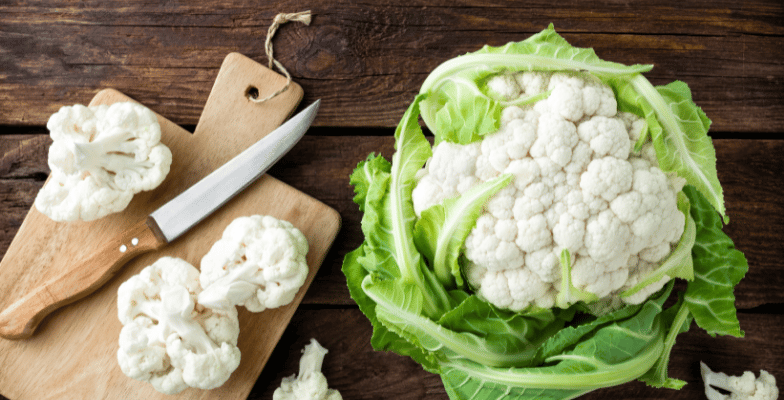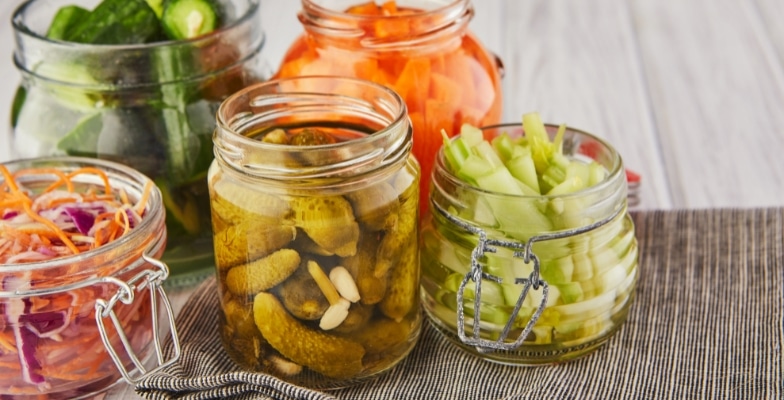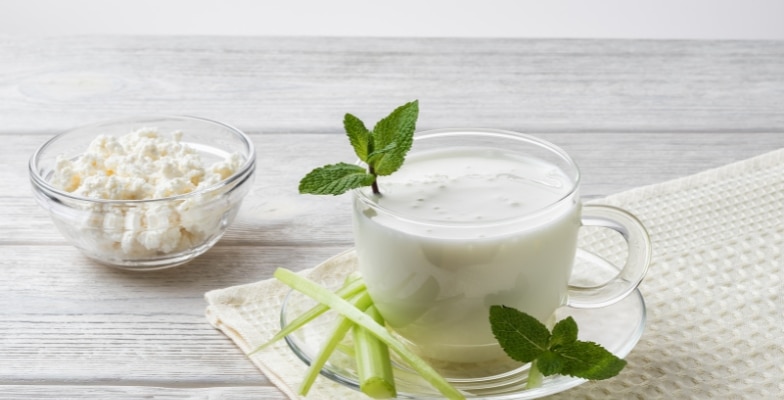Cauliflower Nutrition Facts | What Is Cauliflower Good For?
- Introduction
- Cauliflower Nutrition Facts
- Cauliflower Health Benefits
- Cauliflower Glycemic Index
- Possible Risks
- Conclusion And My Recommendation

In the last few years, a boring, white vegetable called cauliflower has created a niche for itself as one of the hottest superfoods.
Today every grocery store sells cauliflower rice, and many restaurants serve cauliflower steak, cauliflower sushi, grain-free bowls featuring cauliflower, and cauliflower pizza as vegan options. The rise in this white vegetable’s status may surprise some, but it makes sense from a nutrition perspective.
I love it raw as well as cooked. We shall look at a few aspects of green broccoli’s poor cousin. Maybe, as a result, many of us may start eating this underappreciated vegetable.
Introduction
Cauliflower is one of several vegetables in the Brassica oleracea species of the genus Brassica, which is in the Brassicaceae (or Mustard) family. Brassica oleracea also includes broccoli, Brussels sprouts, cabbage, collard greens, and kale, collectively called ‘cole’ crops or cruciferous vegetables.
Cauliflower is native to the Mediterranean region and arrived in Europe around the end of the 15th century. It’s a byproduct of a type of wild cabbage that’s also the ancestor of kale, Brussels sprouts, and kohlrabi.
White cauliflower florets are the vegetable’s edible portion, whereas its green leaves and stalk are typically not eaten.
Cauliflower Nutrition Facts
The superfood cauliflower can be part of a healthy diet for weight-conscious people as it has a high water and fiber content and is loaded with protein, vitamins, and minerals.
Cauliflower Fiber
The fiber content in cauliflower ranges from 2 to 3.3 g per 100 g, depending on how it’s cooked. This amount is 8-9% of the RDA (recommended dietary allowance) of fiber for adults.
Cauliflower Vitamins
One cup of raw cauliflower provides 77% of daily vitamin C needs, 20% of daily vitamin K needs, and 10% or more of daily vitamin B6 and folate needs. It provides smaller amounts of thiamin, riboflavin, niacin, pantothenic acid, calcium, iron, magnesium, phosphorus, potassium, and manganese. 1https://nutritiondata.self.com/facts/vegetables-and-vegetable-products/2390/2
Cauliflower Protein
Cauliflower provides a high protein concentration; one cup (107 g) of cauliflower contains 2g of protein and 25 calories, so 31% of its total calories are from protein. 2https://nutritiondata.self.com/facts/vegetables-and-vegetable-products/2390/2
Cauliflower Health Benefits
Antioxidant Power
Vitamins C and K and manganese are antioxidants that can neutralize free radicals before they damage healthy cells and contribute to heart disease and cancer. One cup of cooked cauliflower provides about 70- 77% of the recommended daily amount of vitamin C, 19% of daily vitamin K, and 8% of daily manganese.
Fresh, raw cauliflower has the highest antioxidant activity, followed by steam-blanched, steam-boiled, stir-fried, and microwaved cauliflower. 3https://www.ncbi.nlm.nih.gov/pmc/articles/PMC3793502/
May Help Prevent Cancer
Cruciferous vegetables are rich in plant-based compounds, such as sulforaphane and indoles; researchers suggest that these may reduce cancer risk. Researchers say that sulforaphane in cauliflower can inhibit the enzyme histone deacetylase (HDAC), known to be involved in cancer cells’ progression. 4https://www.ncbi.nlm.nih.gov/pmc/articles/PMC4432495/
The National Cancer Institute suggests that glucosinolates, also found in cauliflower, can inhibit cancer development in several animal studies, including the bladder, breast, colon, liver, lung, and stomach. 5https://www.cancer.gov/about-cancer/causes-prevention/risk/diet/cruciferous-vegetables-fact-sheet
Prostate Cancer- A few case-control studies found that people who ate cruciferous vegetables more frequently had a lower risk of prostate cancer. 6https://www.ncbi.nlm.nih.gov/pmc/articles/PMC2735794/
Colorectal Cancer- In follow-up studies, the Netherlands Cohort Study on Diet and Cancer found that women (but not men) who had a high intake of cruciferous vegetables had a reduced risk of colon (but not rectal) cancer. 7https://pubmed.ncbi.nlm.nih.gov/11117618/
Lung Cancer- The Nurses’ Health Study and the Health Professionals Follow-up Study showed that women who ate about five or more servings of cruciferous vegetables a week had a lower risk of lung cancer. 8https://pubmed.ncbi.nlm.nih.gov/11078758/
Breast Cancer- One case-control study linked eating more cruciferous vegetables with a lower risk of breast cancer in women. 9https://pubmed.ncbi.nlm.nih.gov/11410091/
May Improve Heart Health
A 2015 study published in Oxidative Medicine and Cellular Longevity suggested that sulforaphane has anti-inflammatory qualities that may help protect against hypertension, atherosclerosis, stroke, and myocardial infarction. 10https://www.ncbi.nlm.nih.gov/pmc/articles/PMC4637098/, 11https://www.ncbi.nlm.nih.gov/pmc/articles/PMC3405367/
Linus Pauling, Institute of Oregon State University, advised about a few studies that found consuming higher amounts of cruciferous vegetables may be linked with a decreased risk of cardiovascular disease. 12https://pubmed.ncbi.nlm.nih.gov/21593509/
Like several other vegetables, cauliflower may help reduce cholesterol levels because its fiber can bind to bile acids. Steaming cauliflower increases this capacity more than eating it raw.
May Improve Digestive Health
A 100 g serving of cauliflower contains 92 g of water and about 2.5 g (10% of the recommended daily value) of fiber. 13https://nutritiondata.self.com/facts/vegetables-and-vegetable-products/2390/2 Foods rich in fiber and water can help prevent constipation and promote bulkier and softer stools, making them easier to pass through the digestive system. 14https://pubmed.ncbi.nlm.nih.gov/24876314/
Related Article: What Is Fiber? Health Benefits, Food Sources And Daily Requirements
Studies suggest that dietary fiber may also help regulate the immune system and decrease the risk of inflammation-related health conditions such as cardiovascular disease, diabetes, cancer, and obesity. 15https://www.ncbi.nlm.nih.gov/pmc/articles/PMC3705355/, 16https://pubmed.ncbi.nlm.nih.gov/24920034/
A higher fiber diet appears to help lower blood pressure and cholesterol levels, improve insulin sensitivity, and facilitate weight loss for people with obesity. 17https://pubmed.ncbi.nlm.nih.gov/24920034/, 18https://pubmed.ncbi.nlm.nih.gov/15797686/
Choline is an essential nutrient naturally present in cauliflower that improves sleep, muscle movement, learning, and memory. Choline is also necessary for many steps in the metabolic process. 19https://ods.od.nih.gov/factsheets/Choline-HealthProfessional/
Cauliflower Glycemic Index
Cauliflower has a GI between 15 and 30. People who have diabetes should eat vegetables with a low GI score to avoid blood sugar spikes. 20https://www.researchgate.net/figure/Glycemic-index-values-of-other-white-vegetables_tbl2_236837859
Related Article: What Is Glycemic Index | Food List With Glycemic Index
For all calorie watchers, cauliflower consists of only 25 calories with 5g of carbs per cup, whereas a cup of white rice has about 200 calories and 43g of carbs.
Cauliflower ranks among the top 25 powerhouse fruits and vegetables in the Centers for Disease Control and Prevention’s Aggregate Nutrient Density Index (ANDI). This scoring method ranks foods based on their nutrient content per calorie.
It is on the list of EWG (Environmental Working Group) fifteen cleanest produce to eat with the least amount of pesticide residue. Cauliflower is a chef’s favorite, too, as it has a mild flavor and can be cooked in diverse ways, including:
Steaming
The most straightforward way to cook cauliflower is to steam the whole head or cut it into florets before steaming.
Roasting
Cauliflower’s head can be cut into steaks or florets and roasted or grilled in olive oil with salt and pepper until golden brown.
Pureeing
Cauliflower can be pureed and used as a substitute for flour in cream sauces.
Mashing
Boost the nutritional value of mashed potatoes by adding some steamed cauliflower to them. Chefs are also turning mashed cauliflower into pizza dough for a lighter and healthier crust.
Grating
Grate steamed cauliflower into a rice-like texture. Eat it as a rice alternative, or stuff it into bread the way Indians do to make cauliflower stuffed Paratha, a dish eaten almost daily during winters in north India.
Possible Risks
High-fiber foods like cauliflower may cause bloating and gas if eaten in excess, especially for people with conditions such as irritable bowel syndrome (IBS), inflammatory bowel disease (IBD), Crohn’s disease, or ulcerative colitis.
Conclusion And My Recommendation
I see no reason not to include this white, nutrient-dense, and trendy vegetable in our diets, especially for those trying to cut back on their carb intake while enjoying a mouthfeel similar to rice. Add a few spices, and take this healthy rice alternative and vegan option to the next level.
What do you think of this article? Have any questions? Let me know in the comments below!

Skill-Based Education.
Global Recognition.
Powerful Community Building
Secure a certificate of completion in as little as a day by graduating from one of our free courses.
Get Access to Our Free Courses. No Credit Card Required.

Fabulous Body Membership
Your All-Access Pass to A Fabulous Body & A Rewarding Career
25+ Certificate Courses & Programs, All Included
15 Day Free Trial, 100% Money-Back Guarantee
About Kamini Thakar
Kamini is a very skilled writer/content creator. As a part of Fabulous Body for years, she has authored many articles really proving her prowess in acquiring and presenting knowledge about various health & nutrition topics.










